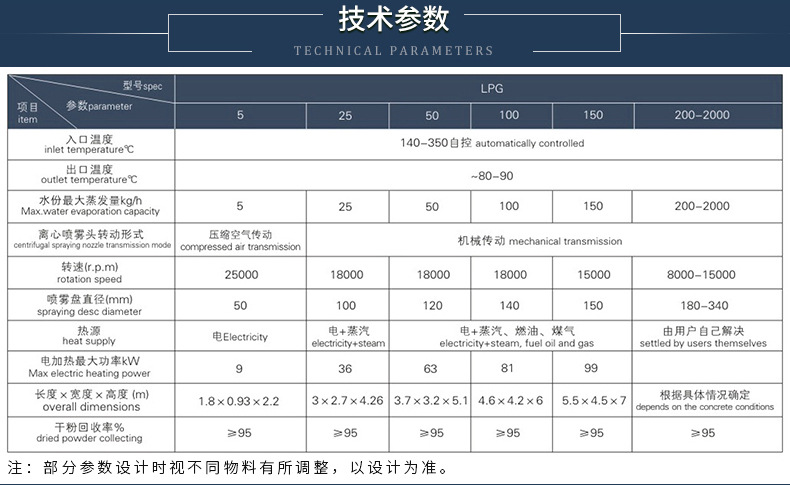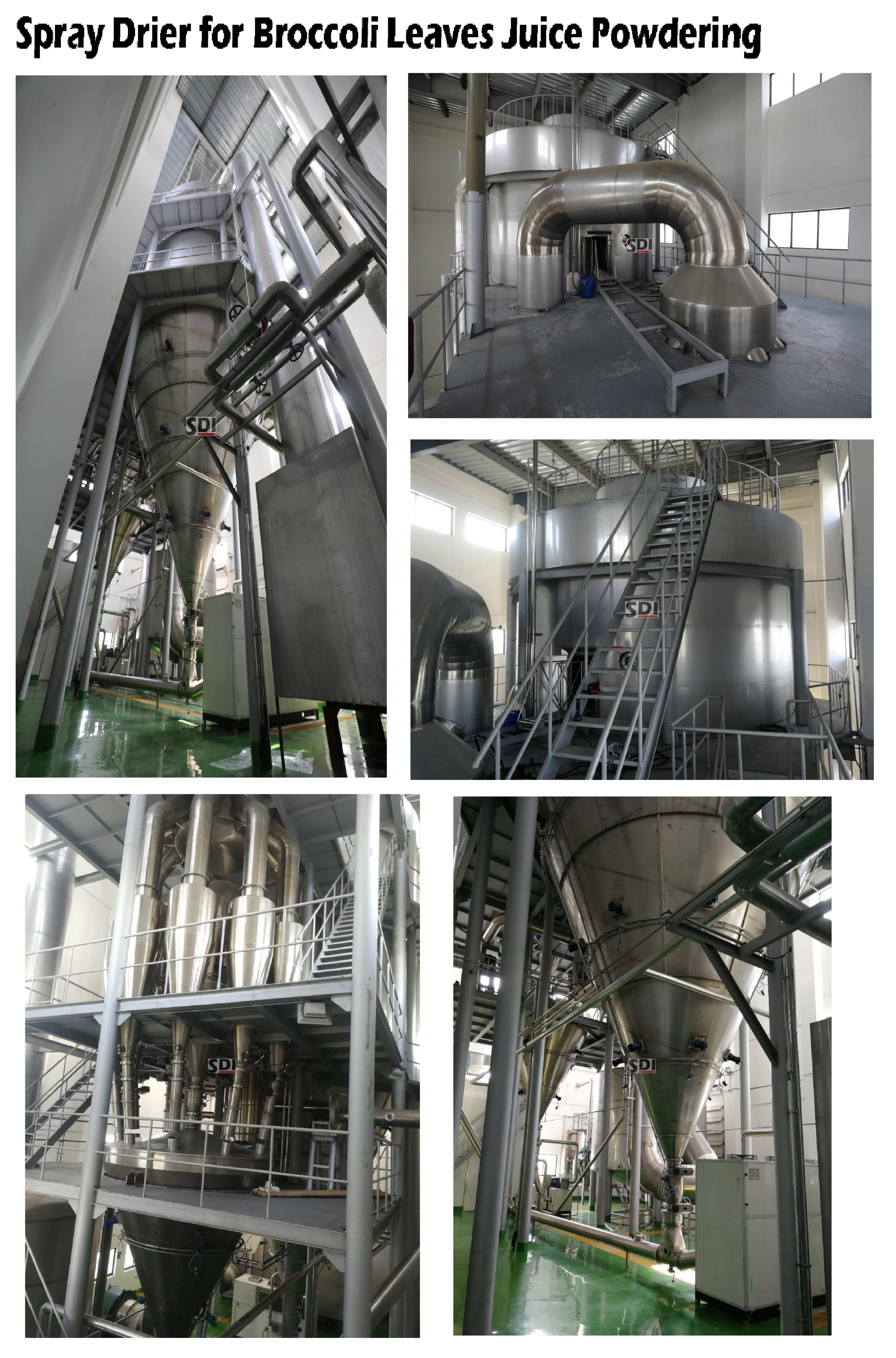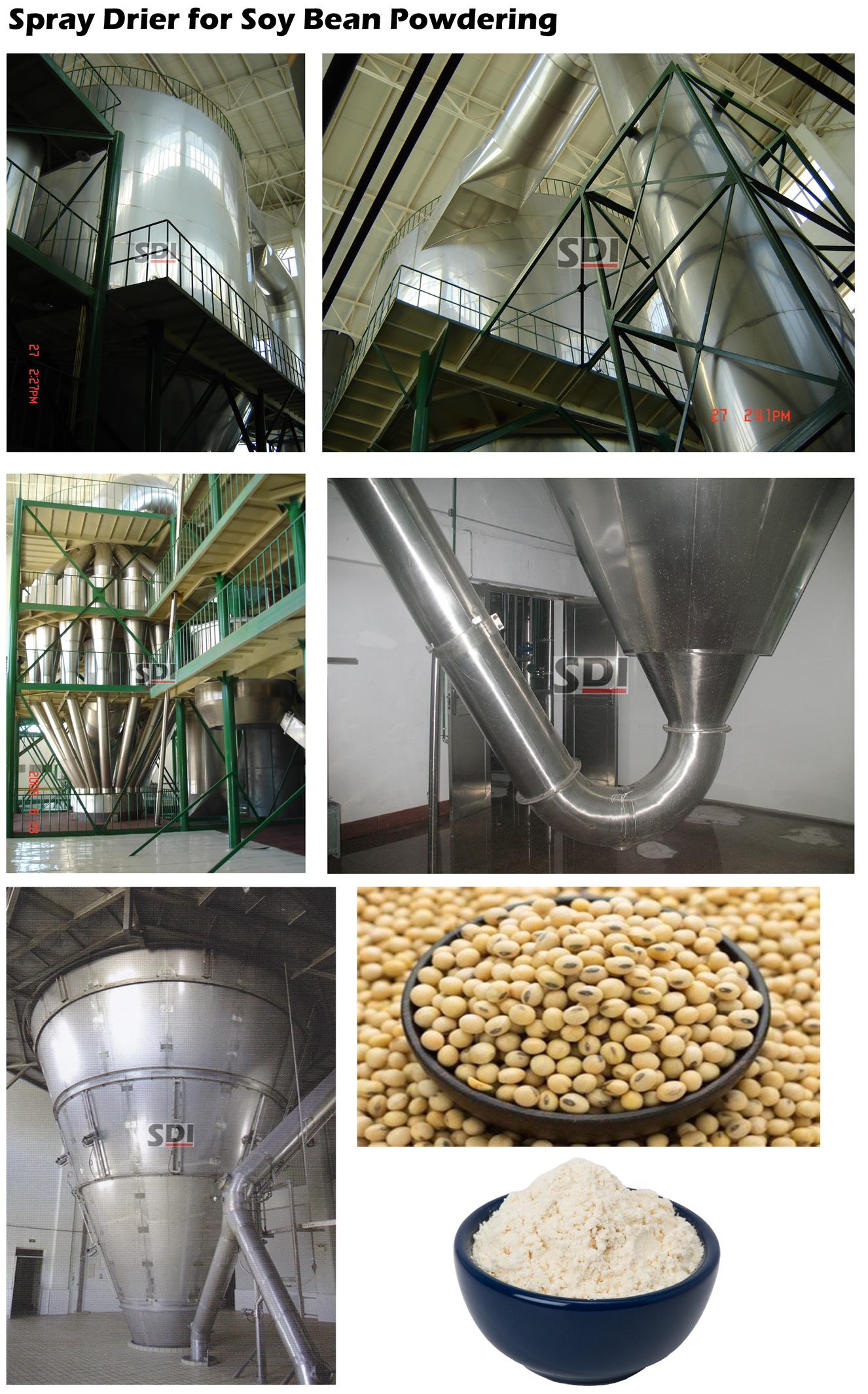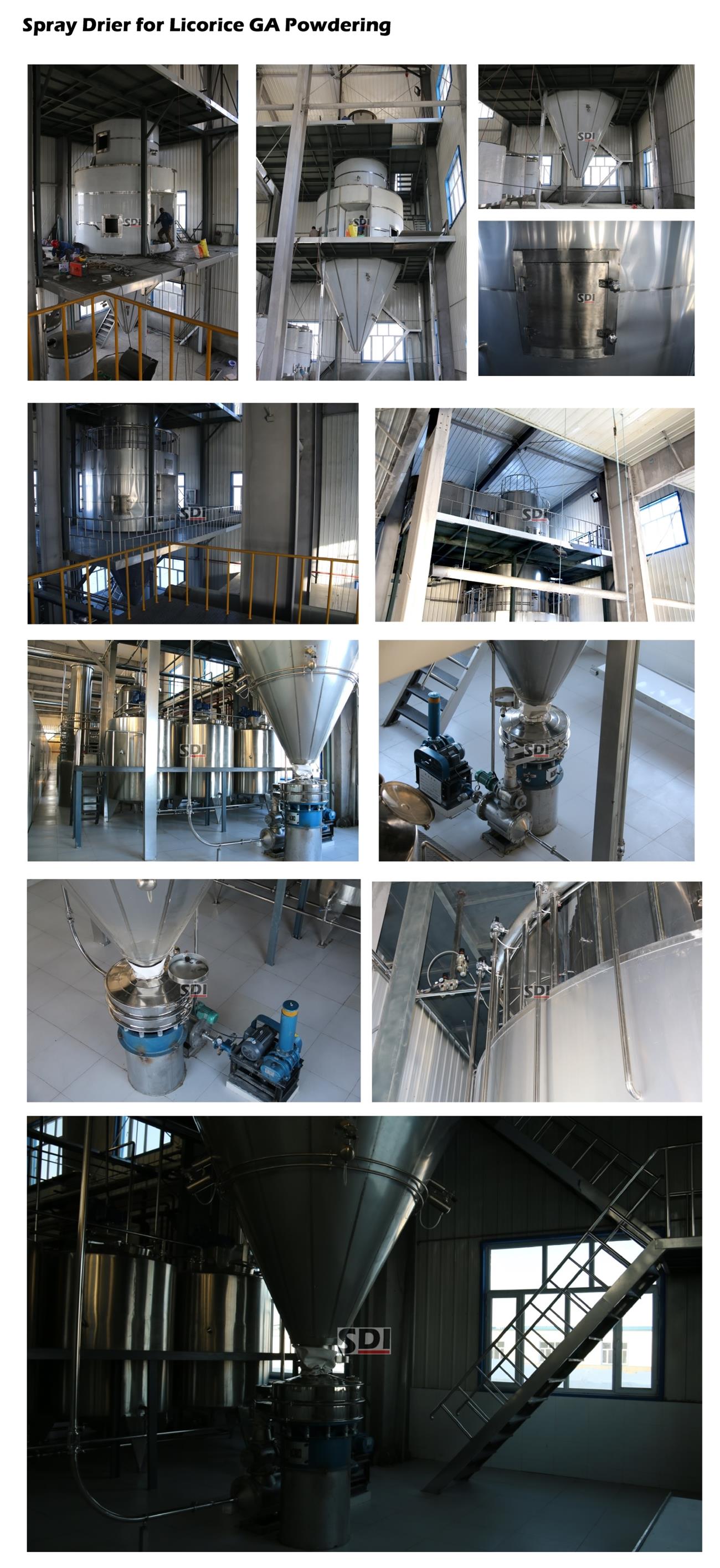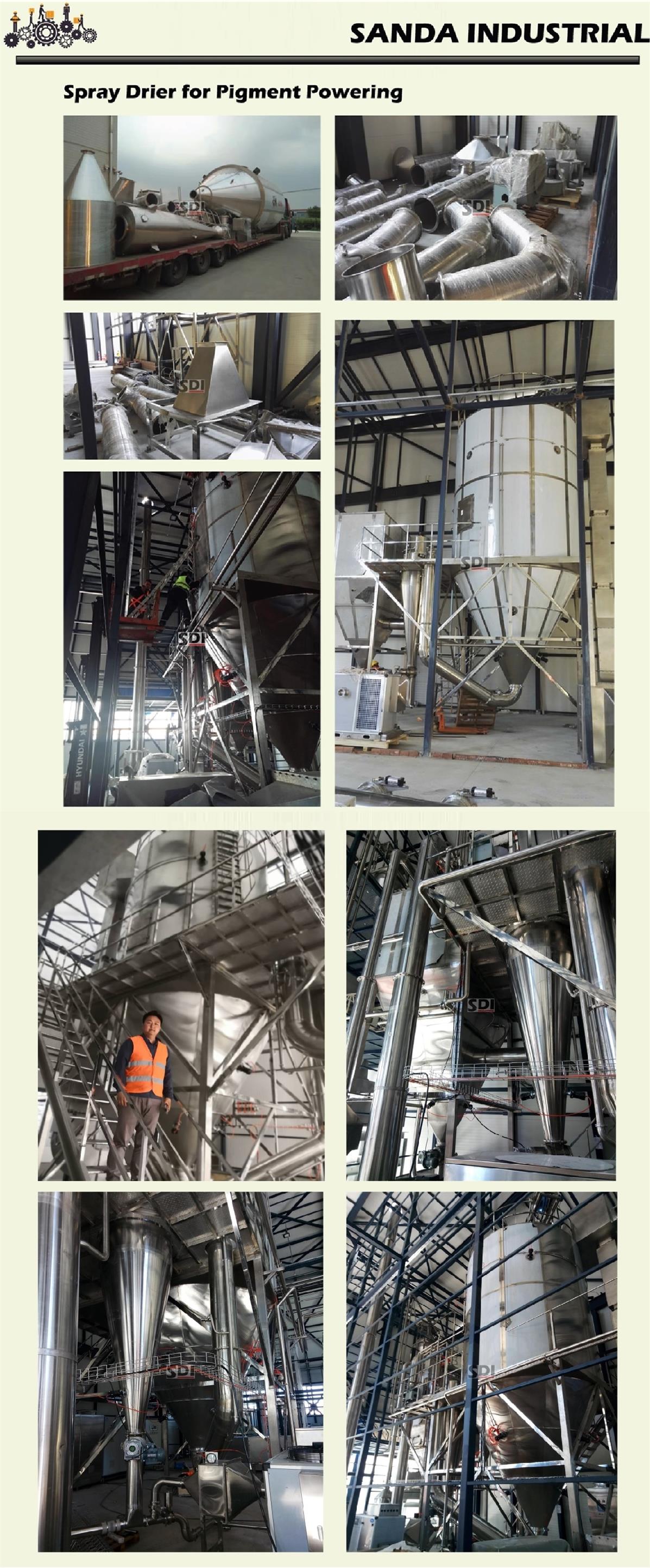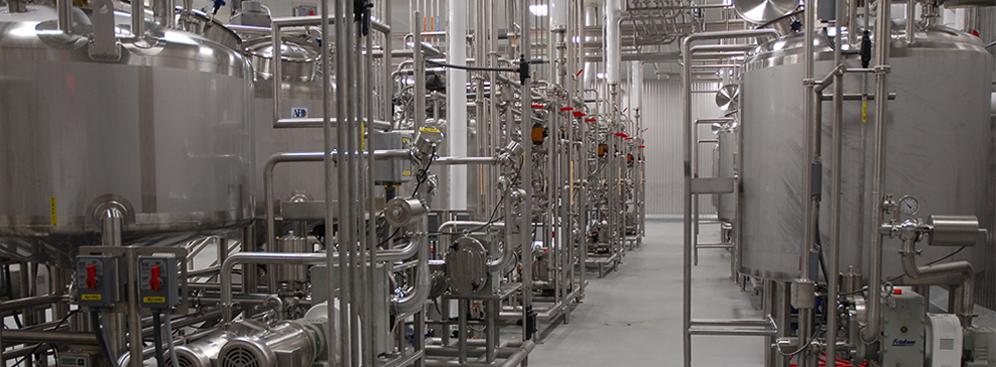
SDI PRODUCT
Spray DrierProduct Video
Spray Drier (dryer), as the name implies, is a device for drying, utilizing a spray. It is one of the most effective methods of drying liquid products. A spray dryer mixes a heated gas with an atomized (sprayed) liquid stream within a vessel (drying chamber) to accomplish evaporation and produce a free flowing dry powder with a controlled average particle size.
A typical Spray Drier would include components as:
Main Air Supply: air filter / electrical or gas heater / air
disperser
Drying
Chamber: all in SS 304L / 316L with hammers, inspection doors
Exhaust
System: ducting / cyclone / exhaust fan / chimney
Controlling:
Control Cabinet / process controller / interlocks and securities
Instrumentation:
all necessary sensors for temperature, pressure, levels etc.
Valves:
all necessary valves, manual and automated
The most important variables in the design of a spray drier are the Evaporation Rate, the Required Particle Size Distribution and the Thermal Stability of the product. The evaporation rate and the dryer ΔT (inlet air temperature minus the outlet air temperature) decides the amount of drying air needed, which also decides the sizing and cost of almost all of the system components. The particle size requirement affects the choice of atomizer/Nozzle and can also affect the size of the spray dryer. The Product Thermal Stability will dictate the ΔT scope (If product is Thermal Sensitive/Degradation Type, Air Inlet is NOT allowed with extremely high temperature).
There are various elements/factors that can be used for the classification of Spray Drier, however two of those are significantly important:
1. SSD (Simple Stage Dryer) Systems and MPD (Multi Phase Dryer) Systems. While in most of known applications SSD are occupying mostly of them, but MPD shall be applied when products are extremely Sticky, hygroscopic and Thermal Sensitive.
2. Spray Modes in Co-Current Flow (Both the spray and gas flow downward through the dryer), Counter-Current Flow (the feeding sprays down and the gas flows up through the spray dryer) and the Mixed Flow (the gas flows down and the feed sprays up, then comes down with the gas.).
Applications
Chemical Industry: Sodium (potassium) fluoride, alkali dyestuff and pigment,
dyestuff intermediate, compound fertilizer, catalyst, amino acid, white black
and so on.
Plastic Resin: ABS emulsion liquid,
urea formaldehyde resin, phenol formaldehyde resin, formaldehyde resin, PE, PVC
and so on.
Food: Fatty milk powder
,protein, cocoa milk powder, substitute milk powder, egg white(yolk), food and
plant, oats, chicken juice, coffee, instant dissoluble tea, seasoning Sugar,
corn syrup, corn starch, glucose, pectin, malt sugar, and etc.
Our Features
Instant Drying. The surface area produced by atomization of the liquid feed enables a short gas residence time, ranging from 5-30 seconds (depending upon the application), which allows spray drying without thermal degradation.
Continuous Evaporation. Drying Chamber will keep products (droplets) surrounded in the vapor films/envelope, which will continuously keep the product in Statured Temperature. As long as product droplets are not dried to "Bone-dry", evaporation will keep taking place and the temperature of product droplets will not approach up to the Air Outlet Temperature. This will allow the machine to process Thermal Sensitive Product without harm to the product (changes to Properties).
